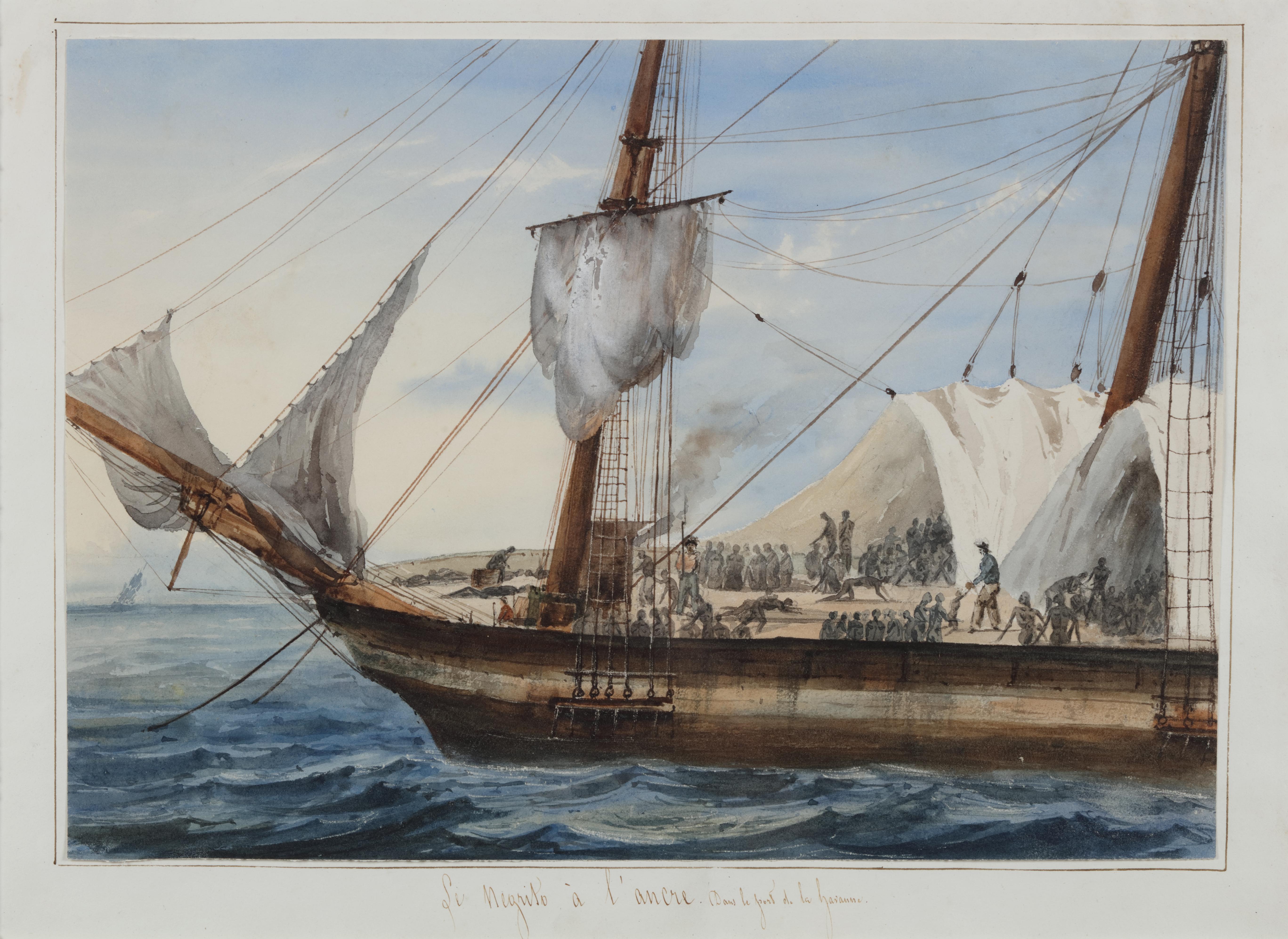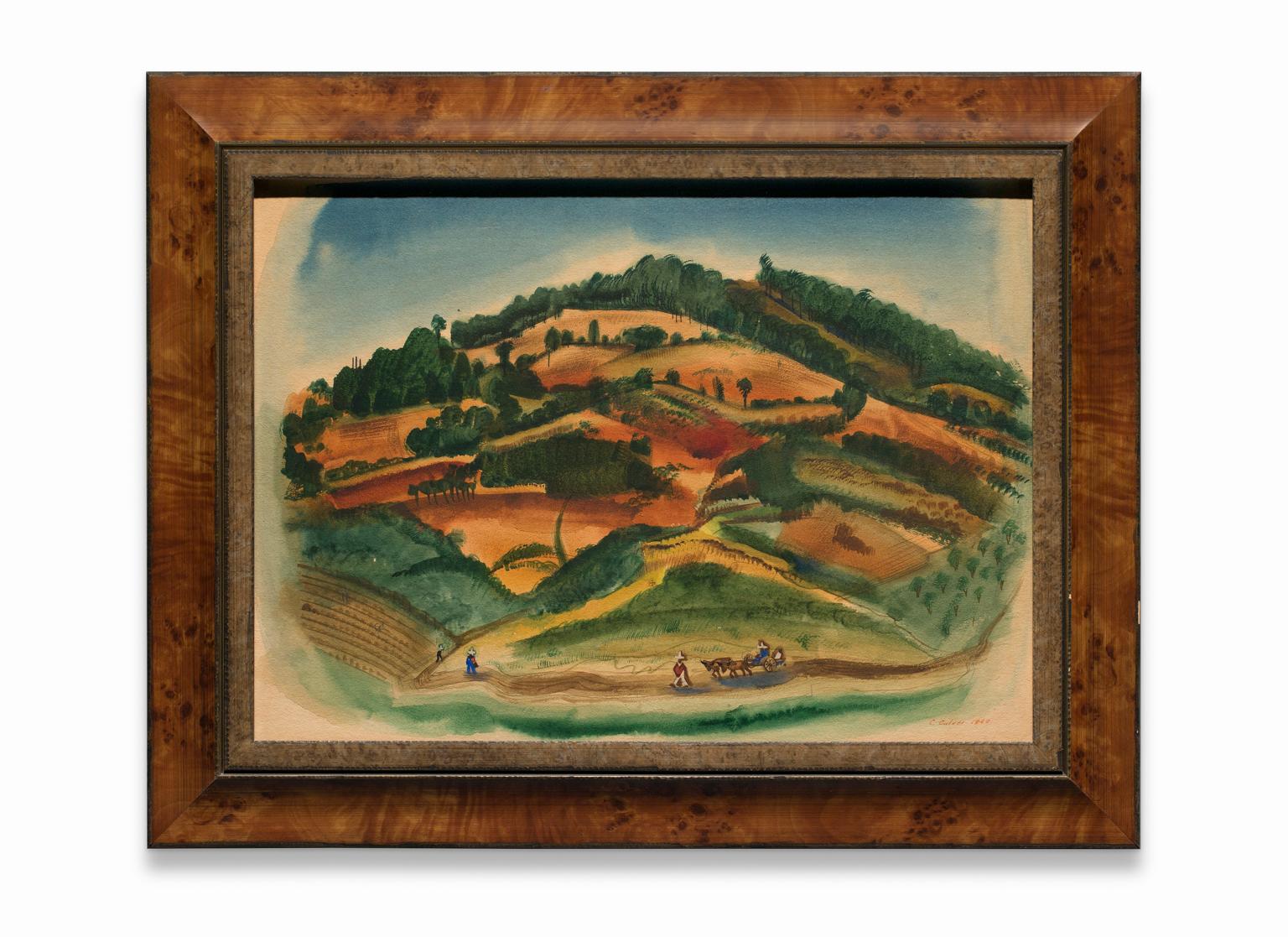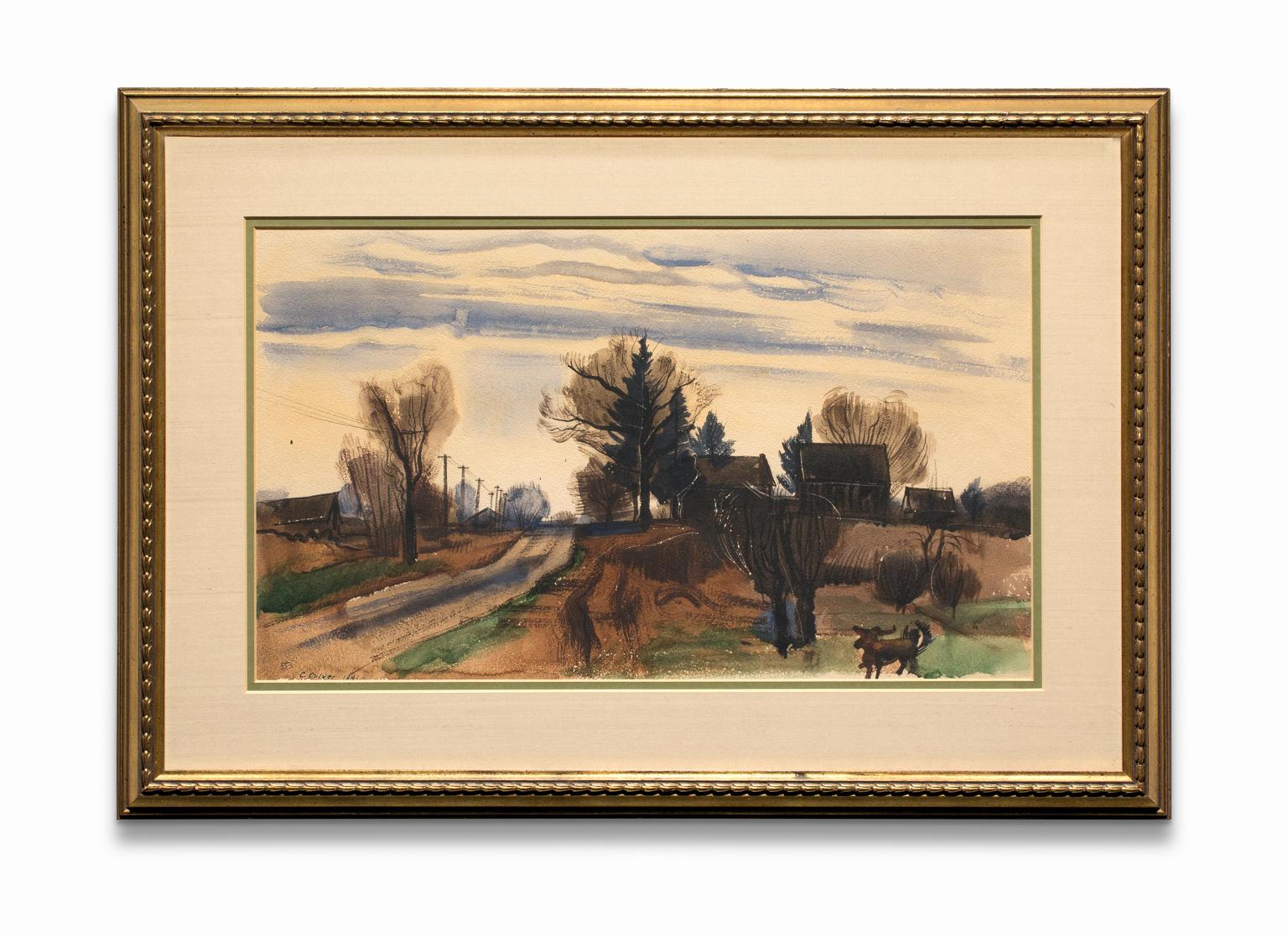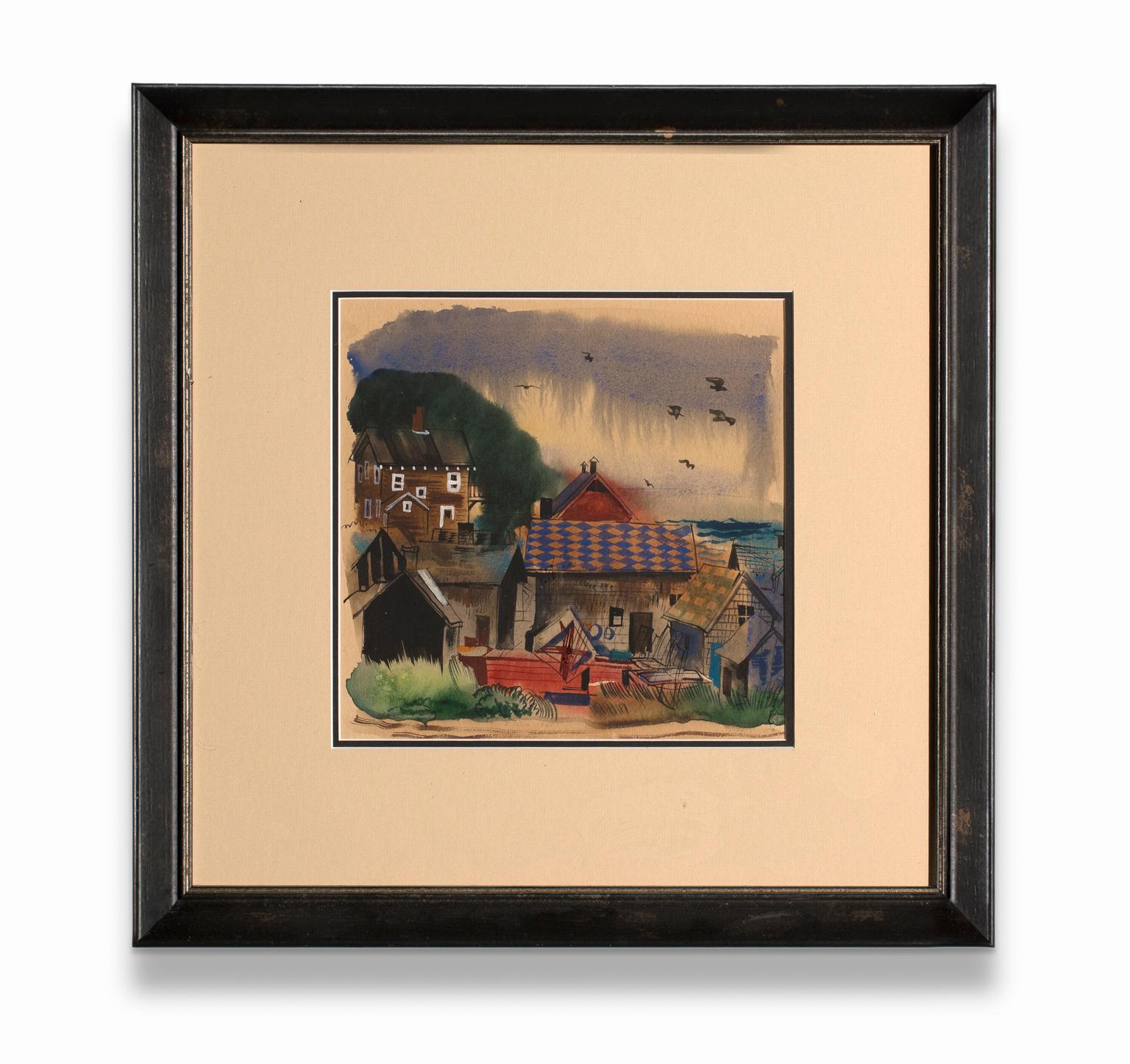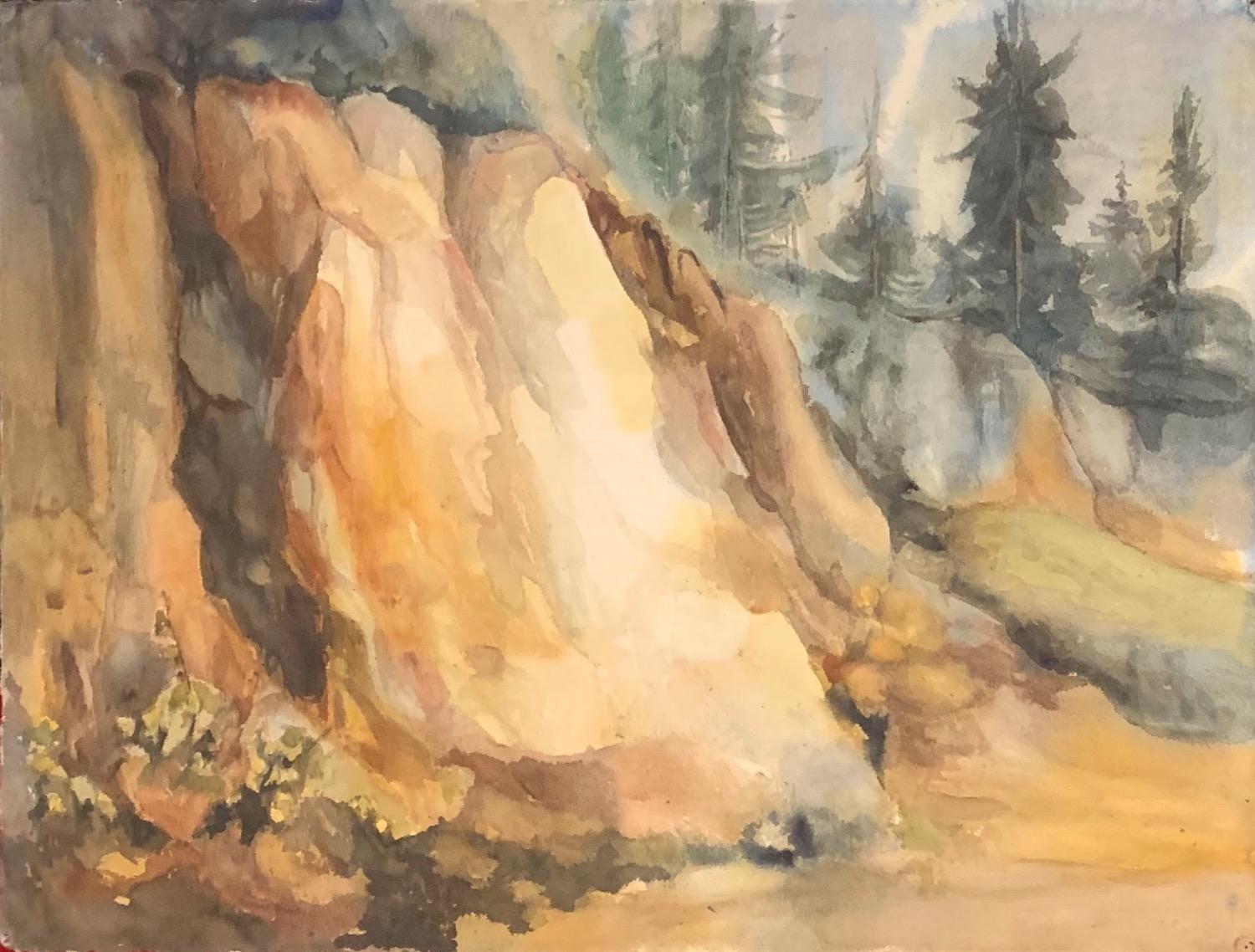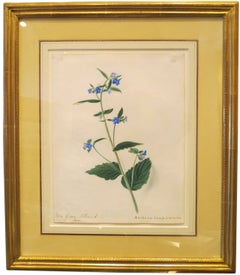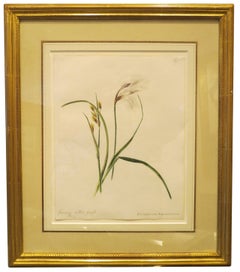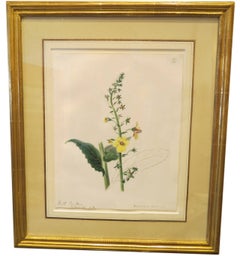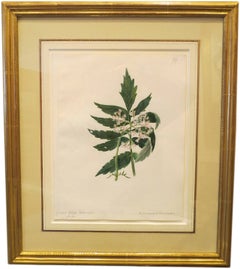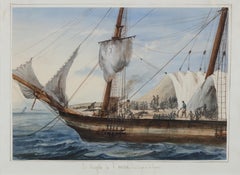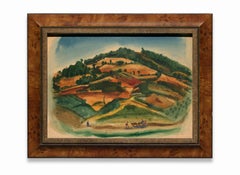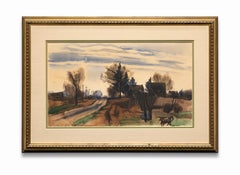Items Similar to "Deadly Nightshade - Atropa Belladonna"
Want more images or videos?
Request additional images or videos from the seller
1 of 11
Emily Stackhouse"Deadly Nightshade - Atropa Belladonna"
About the Item
A Collection of Botanical Watercolours: Drawings of British Plants
Emily Stackhouse (1811-1870) perfectly illustrates the Victorian fascination with the countryside in this remarkable collection. The Stackhouse collection has, for many years, been the subject of extensive research by Clifford Evans, whose article “Forgotten Field” (Country Life, July 6, 1995), fully documents the contemporary confusion associated with the authorship of the illustrations in the highly regarded books Forest Trees of Britain (1847–49), A Week at the Lizard (1848) and Flowers of the Field (1851) by the Reverend Charles Johns.
- Creator:Emily Stackhouse (1811 - 1870, British)
- Dimensions:Height: 21 in (53.34 cm)Width: 19 in (48.26 cm)Depth: 1 in (2.54 cm)
- Medium:
- Period:
- Condition:
- Gallery Location:Lambertville, NJ
- Reference Number:1stDibs: LU157431732
About the Seller
5.0
Vetted Professional Seller
Every seller passes strict standards for authenticity and reliability
1stDibs seller since 2013
13 sales on 1stDibs
- ShippingRetrieving quote...Shipping from: Lambertville, NJ
- Return Policy
Authenticity Guarantee
In the unlikely event there’s an issue with an item’s authenticity, contact us within 1 year for a full refund. DetailsMoney-Back Guarantee
If your item is not as described, is damaged in transit, or does not arrive, contact us within 7 days for a full refund. Details24-Hour Cancellation
You have a 24-hour grace period in which to reconsider your purchase, with no questions asked.Vetted Professional Sellers
Our world-class sellers must adhere to strict standards for service and quality, maintaining the integrity of our listings.Price-Match Guarantee
If you find that a seller listed the same item for a lower price elsewhere, we’ll match it.Trusted Global Delivery
Our best-in-class carrier network provides specialized shipping options worldwide, including custom delivery.More From This Seller
View All"Ever Green Alkanet - Anchusa Sempervirens"
By Emily Stackhouse
Located in Lambertville, NJ
A Collection of Botanical Watercolours: Drawings of British Plants
Emily Stackhouse (1811-1870) perfectly illustrates the Victorian fascination with the countryside in this remark...
Category
19th Century Other Art Style Landscape Drawings and Watercolors
Materials
Paper, Watercolor
"Common Cotton Grass - Eriophorum Angustifolium
By Emily Stackhouse
Located in Lambertville, NJ
A Collection of Botanical Watercolours: Drawings of British Plants
Emily Stackhouse (1811-1870) perfectly illustrates the Victorian fascination with the countryside in this remark...
Category
19th Century Naturalistic Landscape Drawings and Watercolors
Materials
Paper, Watercolor
"Moth Mullein-Verbascum Blattaria"
By Emily Stackhouse
Located in Lambertville, NJ
A Collection of Botanical Watercolours: Drawings of British Plants
Emily Stackhouse (1811-1870) perfectly illustrates the Victorian fascination with the countryside in this remark...
Category
19th Century Naturalistic Landscape Drawings and Watercolors
Materials
Paper, Watercolor
"Great Wild Valerian"
By Emily Stackhouse
Located in Lambertville, NJ
A Collection of Botanical Watercolours: Drawings of British Plants
Emily Stackhouse (1811-1870) perfectly illustrates the Victorian fascination with the countryside in this remark...
Category
19th Century Other Art Style Landscape Drawings and Watercolors
Materials
Paper, Watercolor
"Cladium Mariscus"
By Emily Stackhouse
Located in Lambertville, NJ
A Collection of Botanical Watercolours: Drawings of British Plants
Emily Stackhouse (1811-1870) perfectly illustrates the Victorian fascination with the countryside in this remark...
Category
19th Century Naturalistic Landscape Drawings and Watercolors
Materials
Paper, Watercolor
"Fishing, New Hampshire"
By Sears Gallagher
Located in Lambertville, NJ
Signed LL
Recognized as one of America’s leading etchers and watercolorists during the early twentieth century, Sears Gallagher depicted a variety of subjects ranging from New England landscapes and European subjects to views of Monhegan Island, Maine.
Born in Boston in 1869, Gallagher has impressive family lineage extended back to the Pilgrim fathers and to the first Governor Bradford. He began his art education locally, studying drawing with the Italian artist, Tomasso Juglaris, and watercolor painting with the Samuel P.R. Triscott. He made his first submission to the annual exhibitions at the Boston Art Club in 1887, exhibiting a drawing entitled "Evening News."
Gallagher later refined his skills at the Académie Julian in Paris, working under Benjamin Constant and Jean-Paul Laurens during 1895-96. During his three-years abroad (1894-96), he made summer visits to popular artists’ colonies such as Grèz-sur-Loing, where he painted and sketched en plein air. He also spent time in Italy and England.
Gallagher began his career in Boston, working as an artist-reporter for a local newspaper and illustrating textbooks for the publishing firm of Ginn and Company. However, by the early 1900s he had established himself as a professional artist specializing in etchings and watercolors. By 1920, he had produced 138 etchings of the historic streets and landmarks of Boston, such as Copley Square, the Old State House, and Trinity Church. He was also fond of marines, producing etchings as well as oil and watercolor views of Monhegan Island, Maine, where he spent his summers, as well as Plymouth and Nantucket on Cape Cod. His work includes landscapes painted during autumn trips to Jackson, New Hampshire, as well as views of New York, Venice and England’s Cornish seacoast.
Gallagher exhibited at the major national annuals in United States, and had several solo shows at Doll and Richards Gallery in Boston. His work also appeared at the Paris salons and at the Paris Exposition of 1900. Gallagher’s memberships included the Guild of Boston Artists, the Boston Society of Water Color Painters, the Brooklyn Society of Etchers and the Chicago Society of Etchers. He won several awards and prizes, among them the Logan Prize for etching at the Art Institute of Chicago in 1922 and the City of Boston Tercentenary medal...
Category
20th Century Landscape Drawings and Watercolors
Materials
Paper, Watercolor
You May Also Like
Portrait of a Slave Ship: 'Le Negrito à l’ancre. Dans le port de la havanne'
Located in Amsterdam, NL
FRANÇOIS MATHURIN ADALBERT, BARON DE COURCY (1805-1839)
'Le Negrito à l’ancre. Dans le port de la havanne'
Indistinctly signed lower left
Titled on the mount
Pencil and watercolour, heightened with white, on paper, 24.8 x 34.6 cm
Literature:
The present watercolour will be illustrated in:
- Prof. Manuel Garcia’s projected book on the disease and the slave trade provisionally titled “Fighting the Yellow Demon of Fever: The Struggle against Disease in the Illegal Slave Trade”.
- Prof. Micael Zeuske’s forthcoming Global history of slave trade.
Exhibited:
Mexico City, 1998, Palacio Virreinal, El Barón de Courcy, illustrationes de un viaje, 1831-1833, no. 108
Note:
Baron de Courcy was in the Caribbean in late 1832 and early 1833, following his tour of Mexico in 1832, on the last leg of his “Grand Voyage...
Category
Mid-19th Century Old Masters Figurative Drawings and Watercolors
Materials
Watercolor, Paper, Gouache, Pencil
Charles Culver Watercolor Landscape "Red Hills Near Patzcurao" Signed & Dated
Located in Detroit, MI
The idyllic atmosphere of this Mexican scene is located in Mexico, west of Mexico City and south of Guadalajara. “Red Hills Near Patzcuaro” is set in a golden light. and was one of three paintings by the artist while the artist visited Patzcuaro, Mexico. The humans depicted lend an atmosphere to the painting and an indication of location - dressed in native Mexican peasant dress - without being obtrusive and causing the viewer to concentrate on them. The intense red hills of Patzcuaro are the feature in this painting along with the pinon and juniper trees and the Chamisa shrub. This piece has been professionally reframed with acid-free matting and museum glass.
In a 1952 Detroit Free Press article, entitled “Artist Explains His Work,” Culver was asked why he painted the way he did. He stated: “I try to ‘see’ though not too exactly; I try to think though not too ponderously; I feel emotion yet I try not to become overwrought. I interpret rather than describe, and design rather than depict. I work with values, not light and shade; hence, when I am successful, I achieve substance rather than three-dimensional form, and this satisfies me as being wholly sufficient. In my work I wish to be serious without becoming a bore, exuberant without being frivolous, humorous without being silly. I believe that good paintings are conceived, not contrived; and I am interested in art much more than in pictures.”
Charles Culver...
Category
1940s Naturalistic Landscape Drawings and Watercolors
Materials
Paper, Watercolor
Charles Culver Landscape "Late Afternoon Landscape" Watercolor on Paper
Located in Detroit, MI
“Late Afternoon Landscape” is set in the golden light of evening painted in the mid-west town of Utica, Michigan. It has the atmosphere of when work is done and peace and quiet blanket the countryside. The The farm machinery has ceased its racket as has the family dog wandering about for one last sniff. This piece has been professionally reframed with acid-free matting and conservative glass.
In a 1952 Detroit Free Press article, entitled “Artist Explains His Work,” Culver was asked why he painted the way he did. He stated: “I try to ‘see’ though not too exactly; I try to think though not too ponderously; I feel emotion yet I try not to become overwrought. I interpret rather than describe, and design rather than depict. I work with values, not light and shade; hence, when I am successful, I achieve substance rather than three-dimensional form, and this satisfies me as being wholly sufficient. In my work I wish to be serious without becoming a bore, exuberant without being frivolous, humorous without being silly. I believe that good paintings are conceived, not contrived; and I am interested in art much more than in pictures.”
Charles Culver...
Category
1940s Naturalistic Landscape Drawings and Watercolors
Materials
Paper, Watercolor
"Untitled (Dock Scene)" Watercolor on Paper, Local Scene, Buildings, Water
Located in Detroit, MI
The idyllic atmosphere of this local dock scene falls within a couple of styles one being regionalism, an American realist modern art movement that included paintings, murals, lithographs, and illustrations depicting scenes of rural and small-town America primarily in the Midwest and frequently associated with Grant Wood and Thomas Hart Benton. The other style is romanticism wherein the scene depicted is a more desired or dramatic version of what actually is. “Untitled (Dock Scene)” is typical of a small town dock scene from Michigan where Culver lived or from places as far away as Maine, but what makes it important is its easy familiarity: water, gulls or terns, slanting wood shanties, scruffy dirt patches and course grasses. It is not idealized, but does set the tone of fresh air, the scream of birds and the sun on water. This piece has been professionally reframed with acid-free matting and museum glass.
In a 1952 Detroit Free Press article, entitled “Artist Explains His Work,” Culver was asked why he painted the way he did. He stated: “I try to ‘see’ though not too exactly; I try to think though not too ponderously; I feel emotion yet I try not to become overwrought. I interpret rather than describe, and design rather than depict. I work with values, not light and shade; hence, when I am successful, I achieve substance rather than three-dimensional form, and this satisfies me as being wholly sufficient. In my work I wish to be serious without becoming a bore, exuberant without being frivolous, humorous without being silly. I believe that good paintings are conceived, not contrived; and I am interested in art much more than in pictures.”
Charles Culver...
Category
1940s Naturalistic Landscape Drawings and Watercolors
Materials
Watercolor, Paper
1960s "Mountain Side" Watercolor Landscape California Gold Country Mid Century
Located in Arp, TX
Thelma Corbin Moody
AbEx Mountain Side
c. 1960's
Watercolor on Arches Paper
29.5" x 22", Unframed
Thelma Corbin Moody (1908-1986) of Modesto, CA....
Category
Late 20th Century American Realist Landscape Paintings
Materials
Paper, Watercolor
Vintage Italian Watercolor and Ink - Outskirts of Italian Village
Located in Houston, TX
Warm and lively watercolor and ink painting of a small group of people on the fringes of a small Italian village, circa 1970. Artist unknown.
Original artwork on paper displayed on ...
Category
1960s Landscape Drawings and Watercolors
Materials
Paper, Watercolor, Ink
Recently Viewed
View AllMore Ways To Browse
Flowers Of The Field
Antique Botanical Drawings
19th Century Botanical Watercolor
John A Evans
Lizard Painting
Large Mixed Media Art
Original Picasso
Exhibition Catalogues
1981 Painting
Contemporary Impressionist Artists
Woodcut Art
Vintage Swiss Art
Warring Period
Fine Art Books
Realistic Paintings
Painting Of Leaves
Don Artist
Mint Art
